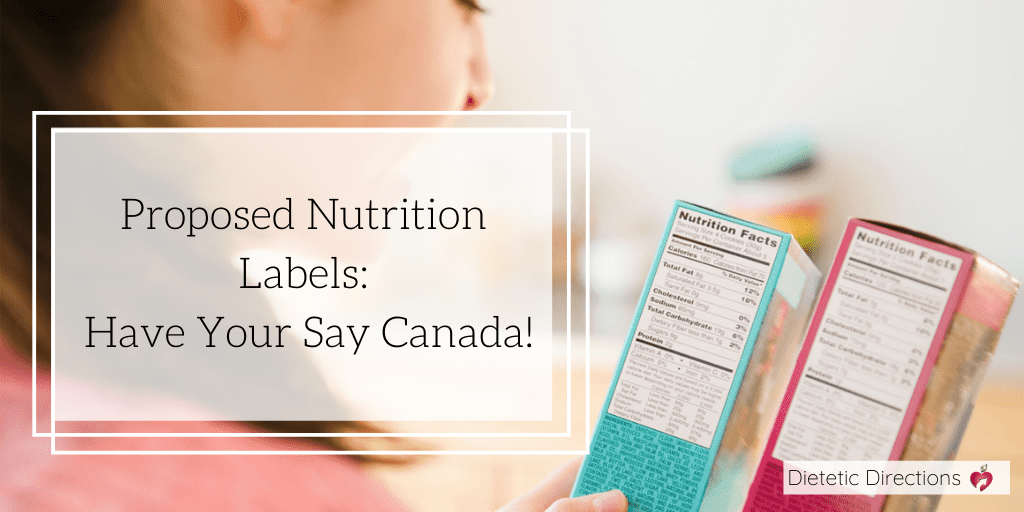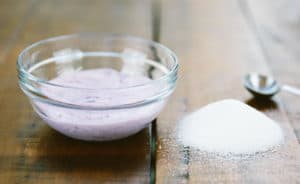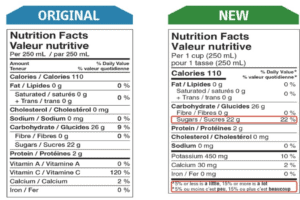
Proposed Nutrition Labels: Have Your Say Canada!
Exciting news in the nutrition world! This week, Health Canada released proposed changes to nutrition labelling on packaged foods. The purpose of these changes is to make nutrition labels easier to read and understand. This is such an important topic since we know that seven out of ten Canadians are looking at the nutrition information on labels to help them make food choices (Tracking Nutrition Trends Survey, 2014). As a consulting dietitian, I educate clients on how to interpret food labels to make informed food choices. I fully support many of Health Canada’s proposed label changes as beneficial ways to simplify the labels and enhance public awareness of key areas of concern like calories and sugar. Today, I have selected five proposed label changes to review. I also encourage you to have your voice heard on these proposed changes by participating in the online poll (voting link is below).

Five Proposed Nutrition Labels Changes:
1. Consistency in Serving Sizes:
This proposed change will have serving sizes consistent between similar products to facilitate nutritional comparisons. For example, if you are a parent shopping for breakfast cereals and trying to compare product A with a serving size of ¾ cup to product B with a serving size of 1 cup, this can be challenging and involves some mental math or approximating. The proposed changes will have 1 cup serving sizes that are consistent between cereals.
Adjustments to serving sizes will also take into consideration the amounts that are typically consumed in one sitting. Therefore, a 325mL bottle of juice will need to provide the serving size as the entire bottle instead of referencing a 250mL serving. I find that many of the current serving sizes on packaged foods have reference serving amounts much smaller than typically consumed making it likely that people will underestimate their consumption.
Packaged foods have reference servings smaller than typically consumed. Share on X2. Define %Daily Values (%DV):
How are people to know if 25% of your daily sodium is a little or a lot? With the new label, the percent daily value (%DV) will be defined at the bottom of the table. It would read, “5% DV or less is a little, 15% DV or more is a lot.” Therefore, that product with over 15% DV of sodium is considered a lot of salt per serving.
3. More info on Sugar!
Health Canada proposes changes to finally help consumers understand the amount of sugar in their food products. The new labels will break down sugar to include the amount of “added sugars”. Health Canada defines added sugars as “sugars and syrups that are added to foods during processing or preparation.” This will help consumers know how much sugar is added to the manufacturing process. Additionally, on current nutrition labels, sugar has no percentage reference so it is impossible to know if 25g of sugar in breakfast cereal is a little or a lot. New proposed labels would also include a percentage so the public can interpret the amount of sugar per serving (hooray!). Keep in mind that 1 teaspoon of sugar is equivalent to 4 grams of sugar; therefore, 6 teaspoons of added sugar is in that breakfast cereal (25g of sugar).

Keep in mind that 1 tsp of sugar is equivalent to 4 grams of sugar!
Added sugars are “sugars and syrups that are added to foods during processing or preparation.” Share on X
4. Improved Ingredient Lists:
This is a proposed change that will enhance understanding and interpretation of what is in your food. The visual look of the ingredient boxes will change to require a consistent appearance with a title, upper and lower case letters (instead of the current all capital letters), bullets between ingredients (instead of commas) and minimum font size. The ingredients listed will also have to be grouped according to category. This means that all types of sugar will need to be grouped together instead of listed separately throughout the ingredient list. This will allow consumers to see more clearly how many different kinds of sugar are used within the product. Product ingredients will continue to be listed with the first ingredient being the one in the largest amount.
5. Less of Top and More on the Bottom:
The new look on nutrition labels will have bold lines separating the contents between the top and the bottom. This means that people can quickly know that the goal is to limit nutrition, saturated fats, cholesterol, sodium and sugar (in the top portion of the label) while emphasizing fibre, protein, and key vitamins/minerals in the lower portion.
Bottom Line:
It is important that consumers understand nutrition labels and are able to use this information to make informed choices. What do you think about the proposed changes? Make sure your voice is heard. Share your comments with Health Canada online between July 14th and September 11th. The survey has 10 questions and takes 5-10 minutes. Click here to access the survey and have a say on our proposed label changes!

Original vs New nutrition label



